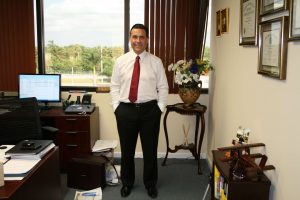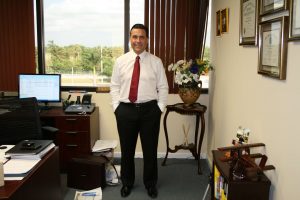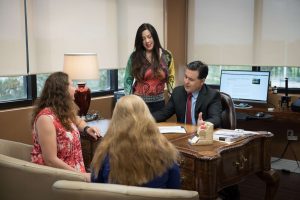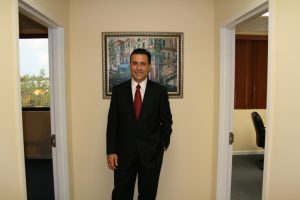Turning Losses into Refunds
Losses into Refunds with (NOL) carryback allowances. Carryback allows a firm to apply a net operating loss to a previous year’s tax return
Businesses with a need for a cash infusion may be able to obtain one quickly as a result of turning Losses into Refunds from recently expanded net operating loss (NOL) carryback allowances. These provisions address the fact that, although a net loss may appear in only one tax year, it represents weaknesses that may have arisen over the years in which their effect was temporarily masked by favorable income opportunities. Then, once the economy recedes and the business posts a loss, it would otherwise be unable to obtain tax benefits from the amount of loss that exceeded income in that tax year. In a sense, these provisions acknowledge swings in the business cycle and help smooth them out by allowing taxpayers to turn Losses into Refunds in bad years. In addition, for many struggling businesses in a tight credit environment, these provisions can provide much-needed cash flow, ask your accountant.
This article describes some of the provisions of federal law that can be used by businesses with NOLs to obtain cash refunds of taxes paid in prior years or to reduce tax liabilities in future years. It also discusses procedures that may help businesses thereby due to a refund to receive it relatively quickly. Similar techniques for taxes at the state and local level are not discussed here but should not be overlooked.
NOL CARRYBACK PROVISIONS TURNING LOSSES INTO REFUNDS
IRC § 172 allows for carryforwards and carrybacks of an NOL. The general NOL carryback period is the two years preceding the loss year. If the NOL is not fully used on the carryback, it may be carried forward for the 20 taxable years following the loss year. A taxpayer may elect to waive the two-year carryback and carry the entire NOL forward, but an immediate tax refund may be considered more beneficial. The carryback period for purposes of the alternative minimum tax is the same as the period chosen for the regular tax.
Under the American Recovery and Reinvestment Act of 2009, for a tax year that began or ended in the 2008 calendar year, an “eligible small business” could elect a three-, four- or five-year NOL carryback period for certain losses, instead of the usual two-year period. An eligible small business is one whose average annual gross receipts for the three tax years ending with the year of the NOL are $15 million or less. For tax years ending after Dec. 31, 2007, and those beginning before Jan. 1, 2010, the Worker, Homeownership, and Business Assistance Act of 2009 removed the eligible small business requirement, making the extended carryback period available to businesses of any size. However, the election may be made for either 2008 or 2009 but not both. In addition, if an NOL is carried back to the fifth preceding year, it can be used to offset only 50% of the taxable income in that carryback year. This extended carryback period will benefit many taxpayers by providing a relatively quick cash infusion of a larger amount than would be available with a two-year carryback. See Revenue Procedure 2009-52 for IRS guidance on making the carryback election.
Although these provisions are temporary a carryback period longer than two years may be available under other provisions of the Internal Revenue Code—some of them permanent—for businesses and individuals in particular circumstances. They include:
- Three-year carryback for an individual’s NOLs arising from casualty or theft losses (including Ponzi scheme losses) (section 172(b)(1)(F)).
- Five-year carryback for NOLs arising from certain farming losses (section 172(b)(1)(G)).
- Five-year carryback for certain NOLs attributable to a federally declared disaster occurring before Jan. 1, 2010 (section 172(b)(1)(J)).
Three other common carryback opportunities also should be kept in mind:
- A foreign tax credit that cannot be used in the current year may be carried back to the immediately preceding year and then carried forward 10 years (section 904(c)).
- A corporation is allowed a three-year carryback for a net capital loss that is not attributable to a foreign expropriation capital loss and that does not produce or increase an NOL in a carryback year (section 1212(a)(1)(A)).
- A taxpayer other than a corporation, estate, or trust (section 1212(c)) may elect to carry back a “net section 1256 contracts loss” to each of the three taxable years preceding the loss year to offset any net section 1256 contract gain in those years. Section 1256 contracts include regulated futures contracts, foreign currency contracts, nonequity options, dealer equity options, and dealer securities futures contracts.
OBTAINING THE BENEFITS
An individual, estate, or trust can obtain a tentative (quick) refund of taxes paid in prior years by filing a Form 1045, Application for Tentative Refund. A corporation uses Form 1139, Corporation Application for Tentative Refund. The tentative refund form must be filed within one year after the end of the year in which the NOL arose. If this form is properly and timely filed (with all required attachments), the refund will be issued within 90 days after the later of (a) the date the form is filed or (b) the last day of the month that includes the due date (including extensions) of the tax return for the loss year. Although the IRS will issue a refund pursuant to a tentative refund claim, it can later audit the tax returns involved and recover the refund as well as any other tax deficiency that might exist. However, if the tentative refund is properly filed, the IRS will issue the refund check within the 90-day period. The IRS has math and computational error correction authority in a limited examination to change the taxpayer’s loss amount or related adjustments, and its decision is final, but the IRS may not make other, unrelated changes for the carryback year, such as decreasing a depreciation deduction or increasing gross income. See Treas. Reg. § 1.6411-3. The instructions for filing Form 1045 should be carefully followed, including attaching all required forms (for example, copies of all schedules K-1 from partnerships, S corporations, estates, or trusts that contribute to the carryback).
If the tentative refund approach is not used, a taxpayer may file amended tax returns for the carryback years to obtain the benefits of an NOL carryback. However, the IRS usually takes longer than 90 days to process an amended return, and it can conduct an examination of the loss year and/or the carryback years before issuing a refund. Handling an examination will often involve considerable time, during which any refund will be delayed. Obviously, if the examination discloses an issue, the refund might not be issued, and a tax deficiency might arise.
SPECIAL EXTENSION
In certain circumstances, two additional procedures can enhance corporations’ cash flow in a poor economic environment. If a corporation expects an NOL in a particular year (for example, 2010) that it expects to carry back to the immediately preceding year to obtain a refund, and its tax for the immediately preceding year is not yet due (normally, the tax for calendar 2009 would be due on March 15, 2010), the corporation may be able to obtain an extension to pay the tax.
Otherwise, to avoid penalties, the corporation would have to pay the tax for the preceding year, file its return for the preceding year, wait until the end of the current year in which the NOL arose, file its tax return for that year, and then file Form 1139. While a refund should be forthcoming within 90 days after Form 1139 is filed, the corporation could instead extend the payment period by filing Form 1138, Extension of Time for Payment of Taxes by a Corporation Expecting a Net Operating Loss Carryback. Interest is charged for the period the tax payment is extended.
Form 1138 must be filed after the start of the tax year of the expected NOL but before the tax liability for the preceding year must be paid (that is, March 15 for a calendar-year corporation). The extension for paying the preceding year’s tax runs to the end of the month in which the return for the year of the expected NOL is required to be filed (including extensions). A corporation in this situation may further extend the time for payment of the prior year’s tax by filing a Form 1139 (see above) before the period of extension terminates. The payment will be further extended until the IRS informs the corporation that it has allowed or disallowed the tentative refund.
QUICK REFUND OF ESTIMATED TAX
Besides NOL carrybacks, another procedure allows a corporation that has paid in more estimated tax for the current year than it needed to have paid, based on currently anticipated income (or loss) to obtain a quick refund of the overpaid estimated tax without waiting to file its tax return for the year and then waiting for its refund check several months thereafter. This refund can be obtained by filing a Form 4466, Corporation Application for Quick Refund of Overpayment of Estimated Tax. Form 4466 must be filed after the close of the taxable year and before the 16th day of the third month after the end of the year (March 15 for calendar-year corporations). It must be filed before the corporation files its tax return. The expected overpayment of estimated tax must exceed 10% of the corporation’s expected tax liability and be greater than $500. The IRS will act on a properly filed Form 4466 within 45 days from the date it is filed. However, care should be exercised not to ask for too large a refund, as that could expose the corporation to a penalty for underpayment of estimated tax.
Turning Losses into Refunds
Welcome to the Gutenberg Editor
The goal of this new editor is to make adding rich content to WordPress simple and enjoyable. This whole post is composed of pieces of content—somewhat similar to LEGO bricks—that you can move around and interact with. Move your cursor around and you’ll notice the different blocks light up with outlines and arrows. Press the
How to Increase Profit Margins Through Virtual CFO Services
How to Increase Profit Margins Through Virtual CFO Services

Great Accounting Firms Share These 10 Traits
Great Accounting Firms Share These 10 Traits which has gone far beyond the paper-pushing days and now involves acting as a virtual CFO

Tax Accountant in Miami Cope with IRS Tax Season Delay
Tax Accountant said IRS delays start of tax season for individual returns would be postponed until February 17 with some as late as March

Miami Accountants Philosophy of Up or Out
Its up or out for Miami Accountants firms are faced with the dilemma of keeping long-term managers that are not ready to be equity partners or let them go.

Contadores en Miami Explican Auditorías del IRS
Contadores en Miami, Gustavo A Viera CPA, explica los pasos de una auditoría, desde la notificación de la auditoría hasta el cierre de la misma
Home » Tax Services » Turning Losses into Refunds

